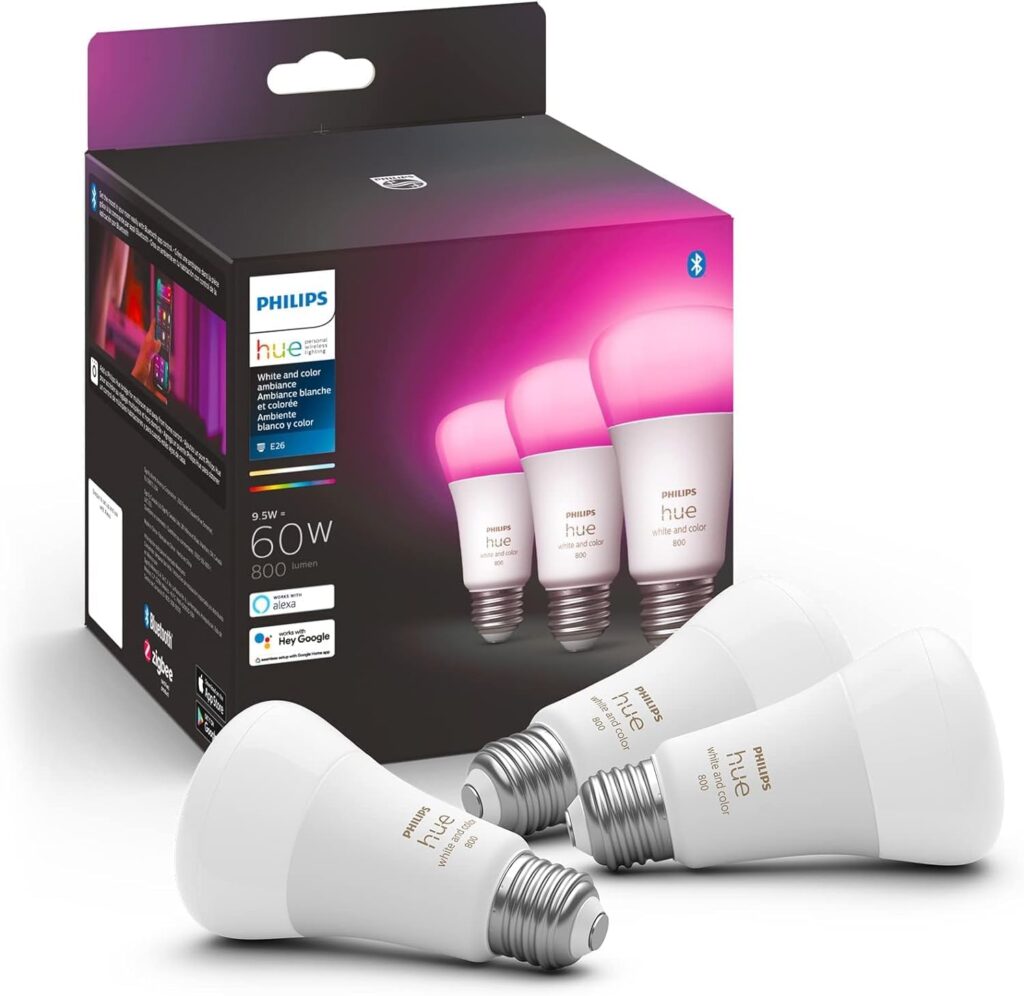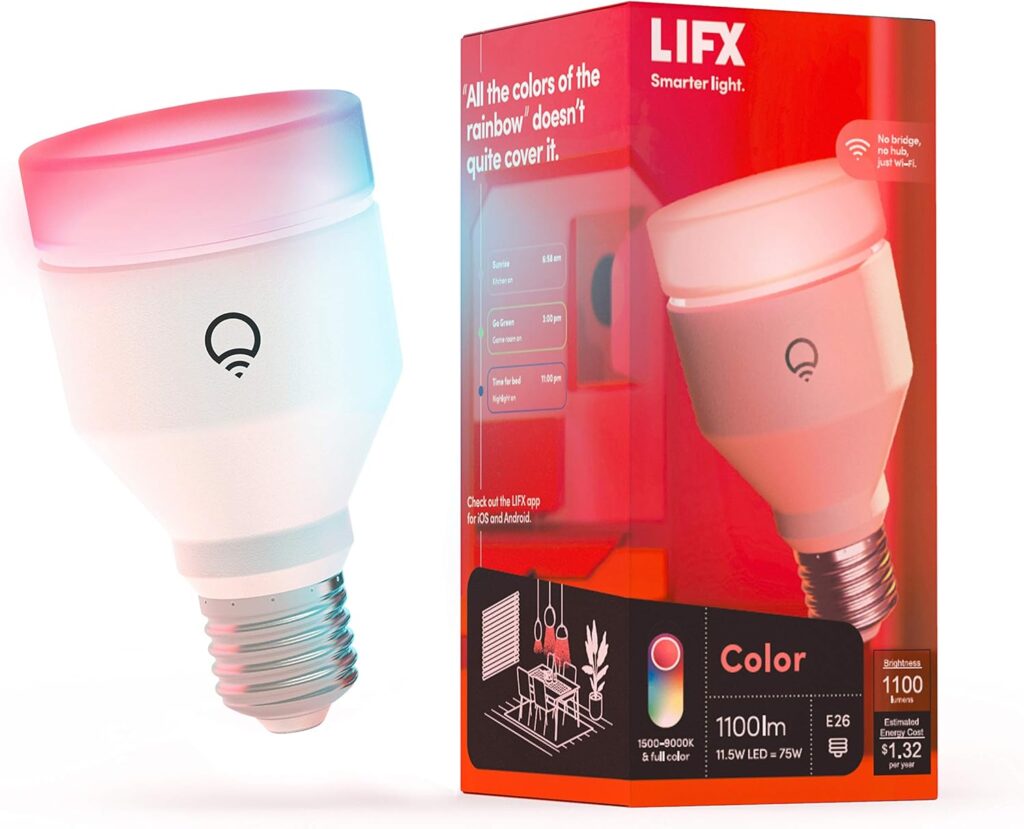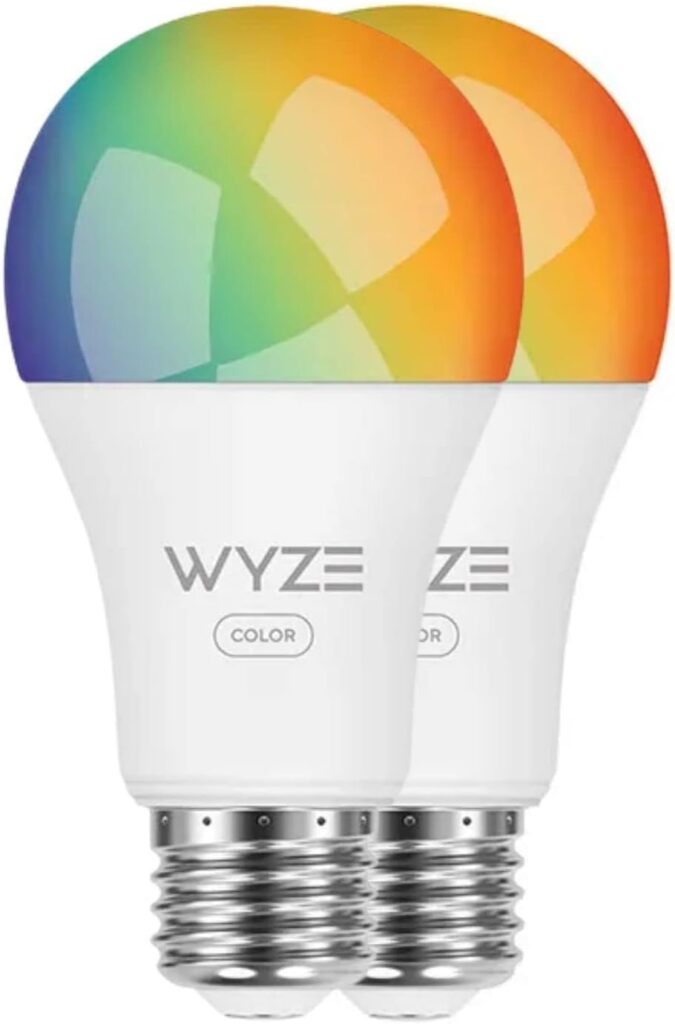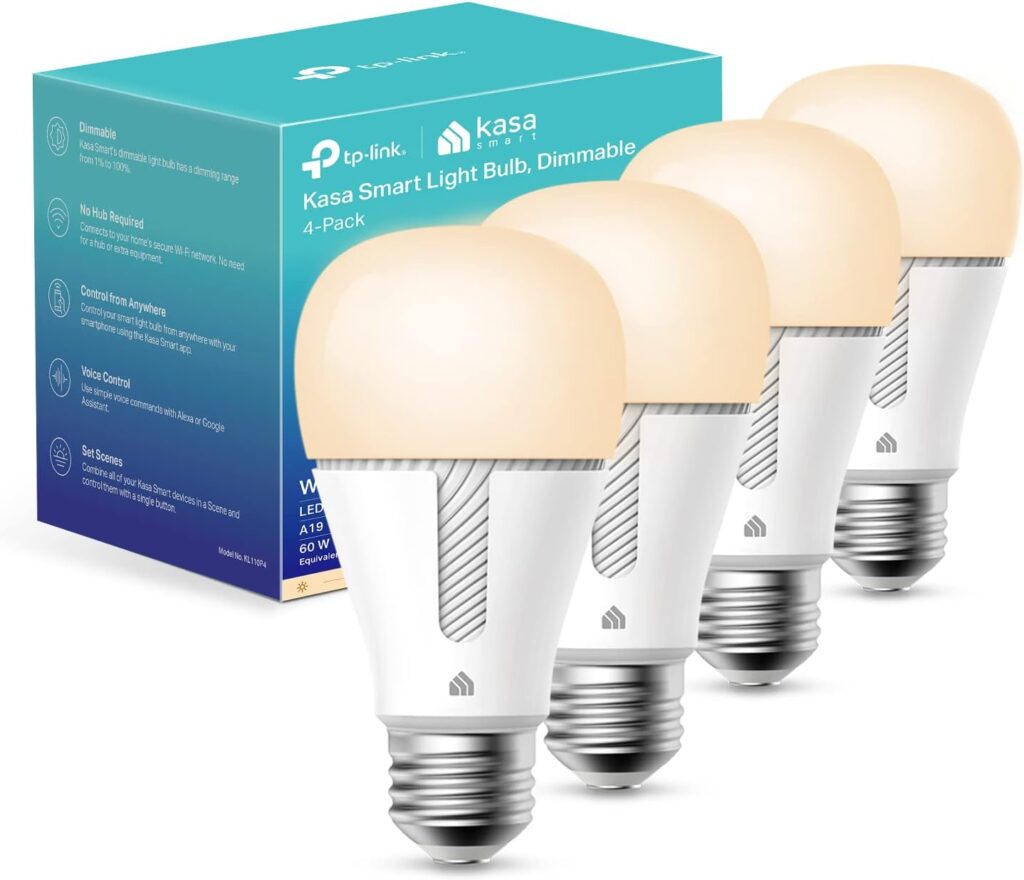Smart LED light bulbs have transformed home lighting, offering unprecedented convenience, energy savings, and automation. Having extensively tested and integrated various smart lighting solutions into my home and work environments, I understand the benefits and challenges of transitioning to smart lighting. In this in-depth guide, I’ll share my hands-on experience, expert insights, and everything you need to know to select the best smart LED light bulbs for your home.

What Are Smart LED Light Bulbs?
Smart LED light bulbs are advanced lighting solutions equipped with wireless connectivity, allowing users to control them remotely via smartphone apps, voice assistants, or smart home automation systems. Unlike traditional incandescent or even standard LED bulbs, smart bulbs offer enhanced features such as dimming, color-changing capabilities, scheduling, and integration with home automation setups.
Key Features of Smart Bulbs
- Remote Control: Manage lighting from anywhere using a mobile app.
- Voice Control: Compatible with Amazon Alexa, Google Assistant, and Apple HomeKit.
- Customizable Lighting: Adjust brightness, color, and temperature to suit different moods.
- Automation & Scheduling: Set routines for automatic lighting adjustments.
- Energy Efficiency: Consumes less power while providing advanced functionalities.
How They Differ from Traditional LED Bulbs
Traditional LED bulbs provide long-lasting energy efficiency but lack smart capabilities. Smart bulbs add an extra layer of convenience, automation, and customization, making them a perfect fit for modern smart homes.
Benefits of Smart Lighting
- Convenience: Hands-free control and remote accessibility.
- Enhanced Ambiance: Create the perfect lighting setting for any situation.
- Security Features: Schedule lights to turn on while you’re away to deter intruders.
- Cost Savings: Reduce electricity bills through energy-efficient usage.
How Smart LED Light Bulbs Work
Wireless Communication Protocols
Smart bulbs use various wireless technologies to connect with your home network and devices:
- Wi-Fi: Directly connects to your router; no hub is required.
- Zigbee & Z-Wave: Requires a hub but provides a more stable and efficient connection.
- Bluetooth: Suitable for local control but lacks remote accessibility.
Compatibility with Smart Home Ecosystems
Smart bulbs integrate with major smart home platforms, enhancing automation possibilities:
- Amazon Alexa: Enables voice-controlled lighting through Echo devices.
- Google Assistant: Allows voice control and smart automation.
- Apple HomeKit: Works seamlessly with iPhones and Siri for intuitive control.
Integration with Other Smart Devices
Smart bulbs can synchronize with security cameras, motion sensors, and thermostats. For example, lights can automatically turn on when motion is detected, improving both convenience and security.
My Experience with Smart LED Light Bulbs
Why I Switched to Smart Lighting
As a tech enthusiast and smart home advocate, I wanted greater control over my home’s lighting. I started with a few smart bulbs and gradually expanded to a fully automated lighting system.
Challenges I Faced During Installation and Setup
- Connectivity Issues: Some bulbs struggled to maintain a stable Wi-Fi connection.
- App Limitations: Some apps lacked user-friendly interfaces and customization options.
- Compatibility Concerns: Ensuring all devices worked seamlessly within my smart home ecosystem.
My Favorite Smart Bulb Brands and Why I Recommend Them
- Philips Hue: Best overall ecosystem and compatibility.
- LIFX: Vibrant colors and no hub required.
- TP-Link Kasa: Affordable yet feature-rich.
Types of Smart LED Light Bulbs
Color-Changing vs. White Light Bulbs
- Color-Changing: Perfect for ambiance and personalization.
- White Light: Offers adjustable color temperature for daily use.
Dimmable vs. Non-Dimmable Smart Bulbs
- Dimmable: Allows brightness adjustment based on needs.
- Non-Dimmable: Fixed brightness; typically more budget-friendly.
Specialty Smart Bulbs
- Outdoor Smart Bulbs: Weatherproof and built for outdoor use.
- Filament Smart Bulbs: Vintage aesthetics with smart functionalities.
- Recessed Downlights: Designed for ceiling fixtures.
Choosing the Right Smart LED Light Bulbs
Factors to Consider
- Brightness (Lumens): Choose brightness based on room size and usage.
- Color Temperature: Adjust warmth and coolness for different environments.
- Connectivity: Wi-Fi, Zigbee, or Bluetooth options.
- App and Ecosystem Compatibility: Ensure the bulbs work seamlessly with your existing smart home setup.
Best Brands and Models on the Market
- Philips Hue White and Color Ambiance: Best for full smart home integration.

- LIFX Mini Color: No hub required, vibrant color output.

- Wyze LED Smart Bulb: Affordable yet packed with features.

- TP-Link Kasa Smart Bulb: Reliable and cost-effective.

Budget vs. Premium Options
- Budget ($10-$30): Wyze, TP-Link Kasa.
- Mid-Range ($30-$50): LIFX Mini, Sengled.
- Premium ($40-$80): Philips Hue, Nanoleaf.
Installation and Setup Guide
Step-by-Step Installation Process
- Install the smart bulb in the desired socket.
- Download the compatible app.
- Connect to Wi-Fi or a hub as required.
- Customize settings and automation.
Troubleshooting Common Issues
- Bulb not connecting? Restart your router and reset the bulb.
- Lights flickering? Ensure your dimmer switch is compatible.
- Bulbs randomly turning on/off? Check for conflicting automation settings.
Tips for Optimizing Performance
- Place bulbs within a strong Wi-Fi signal range.
- Use hubs for better reliability and coverage.
- Regularly update firmware for enhanced performance and security.
Smart Lighting Automation and Customization
Setting Up Scenes and Routines
- “Wake Up” Scene: Gradual brightness increase in the morning.
- “Movie Mode”: Dimmed lighting for an immersive viewing experience.
- “Away Mode”: Randomized lighting to simulate occupancy while away.
Scheduling and Remote Control
- Automate lights based on time or sunrise/sunset.
- Control remotely via apps while away from home.
Integrating with Other Smart Devices
- Pair with motion sensors for automatic lighting.
- Sync with thermostats for ambiance adjustments.
- Integrate with security cameras for enhanced safety measures.
Conclusion
Smart LED light bulbs are more than just an upgrade to traditional lighting—they offer a new way to enhance convenience, efficiency, and security in your home. With my personal experience, expert insights, and detailed recommendations, you’ll be equipped to make the best smart lighting choices for your home.

SAMMY MWANGI the editor of Autohomegadgets.com. He is an Electronics Technician enthusiast and a Sales Manager in one of the leading ICT companies in Africa. When he is not working, he loves to travel and explore nature. He is a Robot fanatic too.

